The Glenrothes presents Philos, a sculptural, no-spills design for drinking whisky at sea
Philos by The Glenrothes, Studio Indigo and Little Halstock is a world-first luxury object at the intersection of yachting, whisky and design
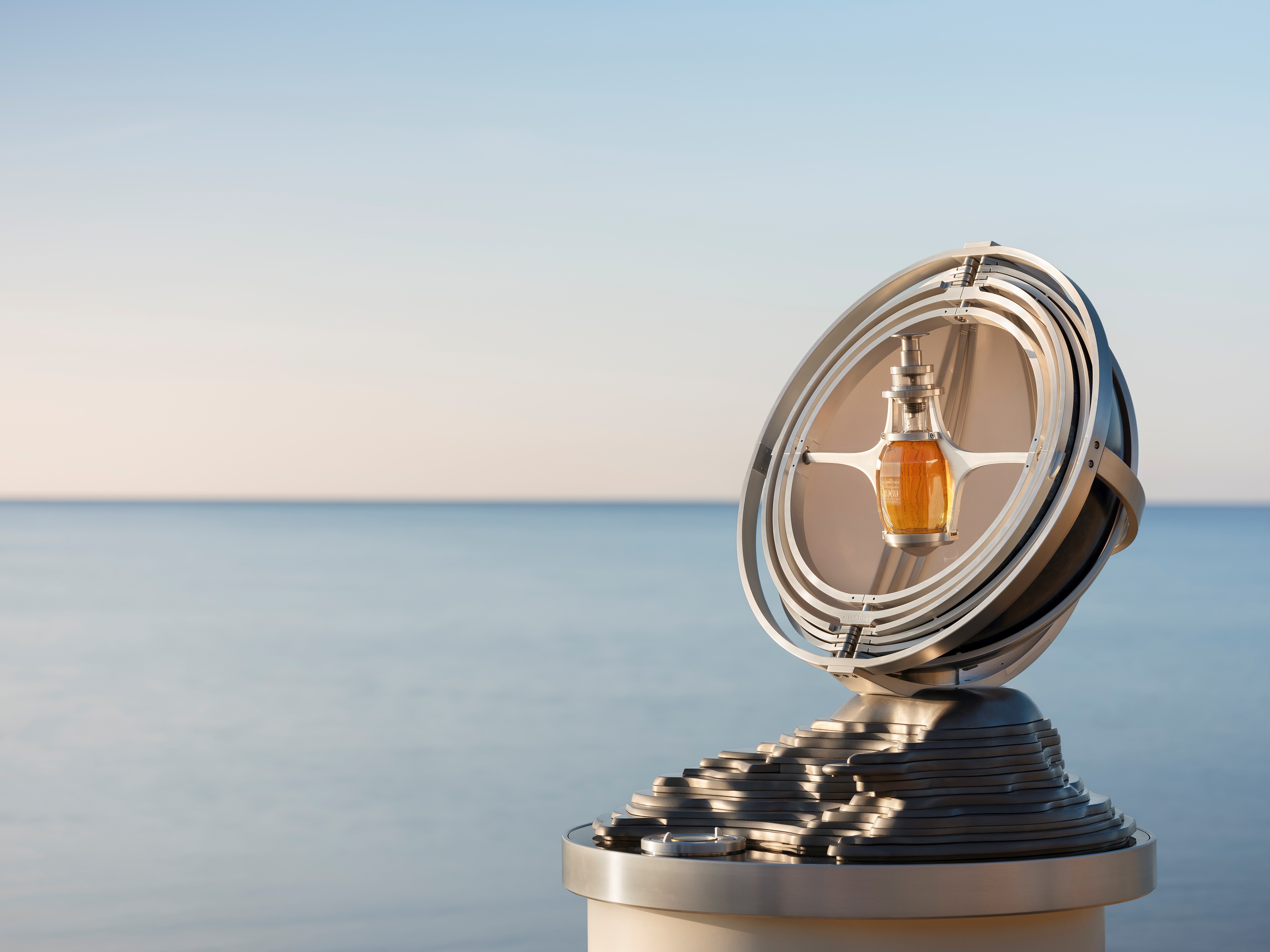
The creation of beautiful objects needs no justification, but often the best design begins with a problem to solve. In the case of Philos, the result of a new artistic collaboration between The Glenrothes, Studio Indigo and Little Halstock, it was this: when drinking rare and special whisky at sea, how can you protect and pour it with no risk of spillage? It had never been achieved before, making Philos an unquestionably luxury object and a world-first across yachting, whisky and design.
Philos by The Glenrothes, Studio Indigo and Little Halstock
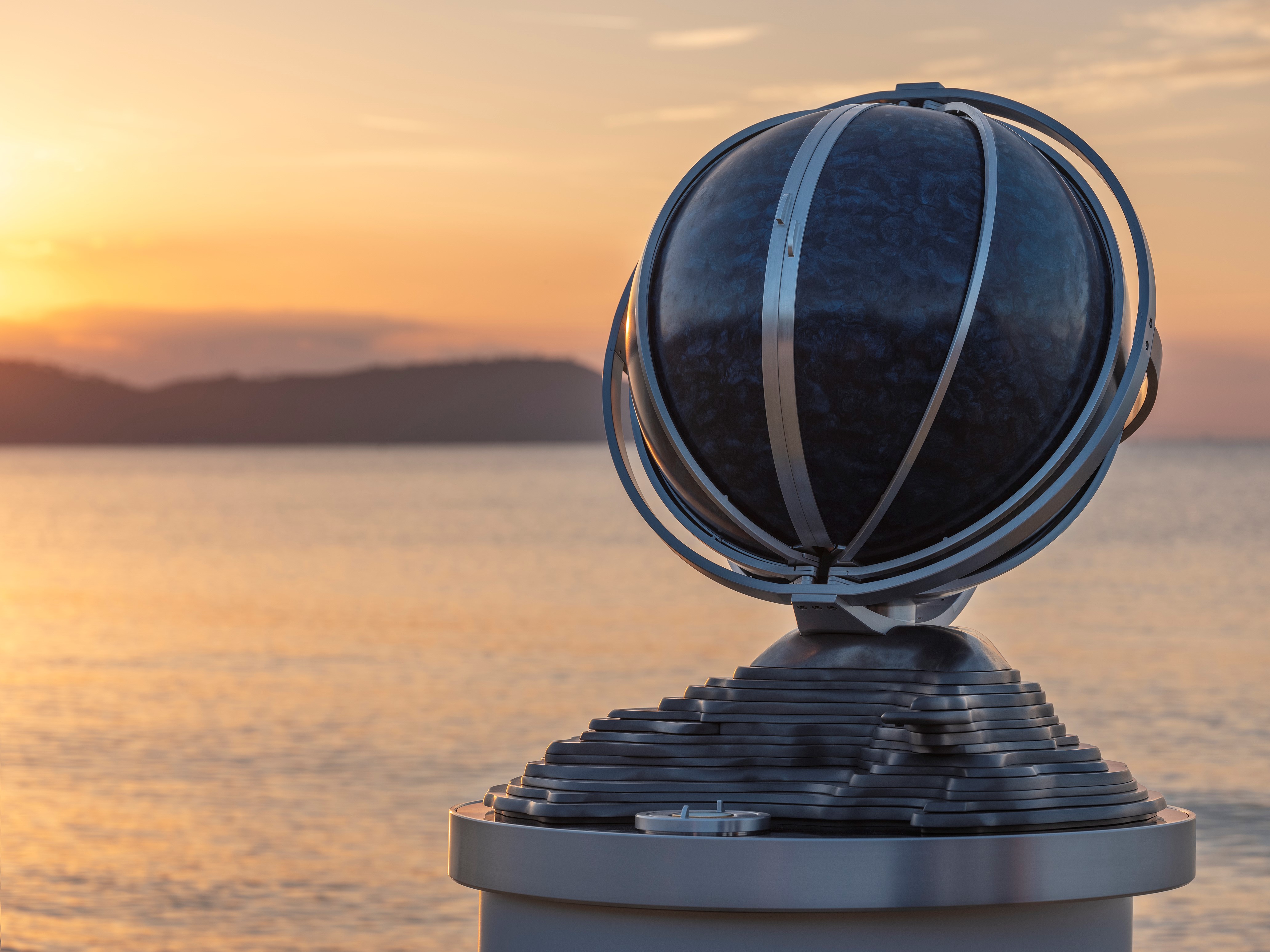
Housed in a spherical structure that is evocative of ancient armillary spheres used in maritime navigation, Philos comprises a finely finished aluminium protective case and self-pouring decanter for The Glenrothes Demijohn 1969. It will undoubtedly bring a sense of theatre and wonder to a nautical nightcap or in fact any whisky-drinking occasion.
Set at a 23.5-degree angle to mirror the rotational axis of the Earth, and hand-painted with deep sea blues and greens, the cabinet is opened by drawing back its six interlocking leaves to reveal a hand-blown crystal decanter held securely in a four-way gimbal. The mechanism allows free movement in response to the rolling waves on a yacht, safeguarding the bottle and its precious liquid from jostles and rough conditions.
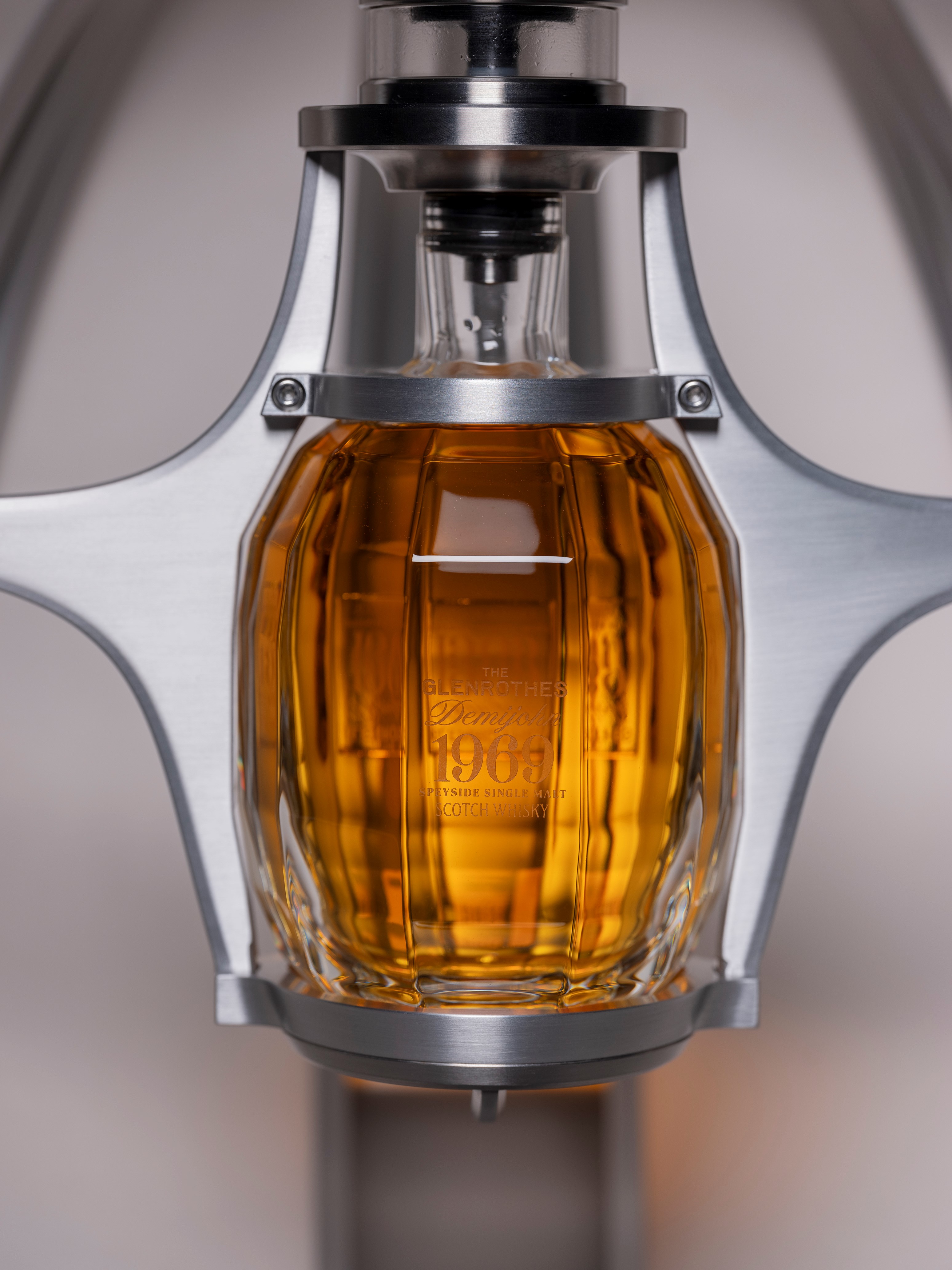
To pour, the bottle is inverted by hand, and locked in place with a secret key. A secure glass is held at the bottle neck. By twisting an aluminium bezel around an antique brass compass (made in Edinburgh in 1891) a series of concealed metal cogs engages to charge the spirit-measure chamber with a perfect 50ml pour. The whisky then disappears, flowing through a concealed pipe before reappearing into a waiting glass, itself held securely in the topographic curves of the base. The entire process is mechanical, and hugely satisfying to operate.
Created with the luxury yacht in mind, Philos can be relied on should the host, captain or bartender have found their sea legs or not.

As a maker of small batch, rare whiskies, The Glenrothes set out to conceive a sculptural object that would bring together the best of British design, craft and engineering – that would be as poetic as it is precise, embodying the company’s distinctive philosophy, with attention to detail and storytelling all combining to enrich a moment in time.
There is an aura of magic surrounding Demijohn 1969, which Philos holds too. While older whisky in The Glenrothes collection exists, these six glass demijohns contain some of the rarest liquid there is. Master Whisky Maker, Laura Rampling, describes it as a 'unicorn whisky' – one that stops you in your tracks, then haunts you with the knowledge you will never see it again.
Wallpaper* Newsletter
Receive our daily digest of inspiration, escapism and design stories from around the world direct to your inbox.
The making of Philos
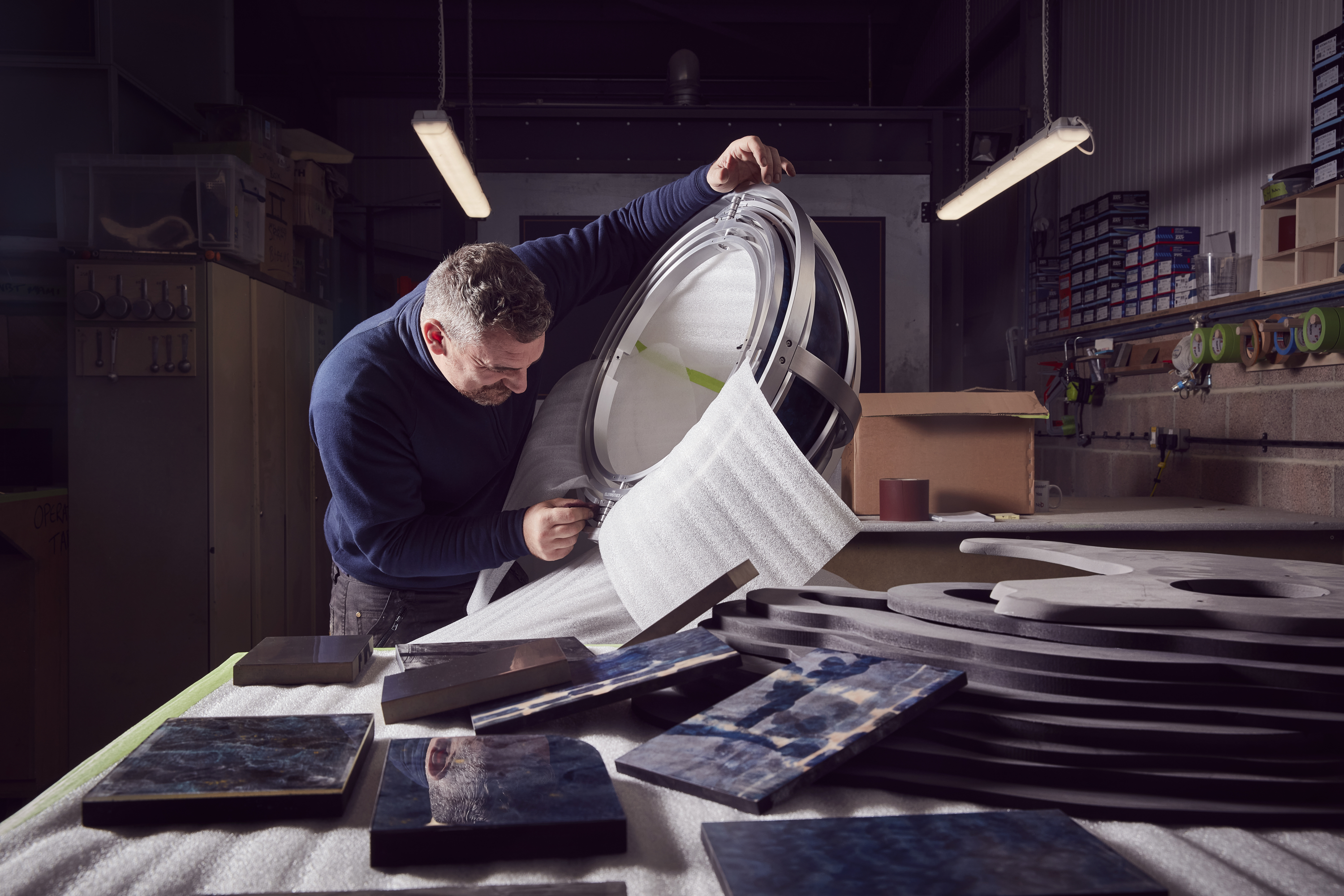
The journey to Philos has not been without challenge, says Anna Lisa Stone, The Glenrothes’ head of creative. 'Through help from experts whom we are happy to call friends, we have overcome them.' The brand was already working with Studio Indigo to redevelop The Glenrothes guesthouse on its Estate, Rothes House. 'Studio Indigo are experts in designing interiors, and their work with yachts of course,' explains Stone. 'The natural flow of our conversations led us to ask, if a whisky connoisseur is going to enjoy incredibly fine and rare whisky, at sea on their yacht, how can this become the most special experience? So, we had the concept and we had the right whisky. The idea for the gimbal device came from myself and was a very natural connection of the dots.'
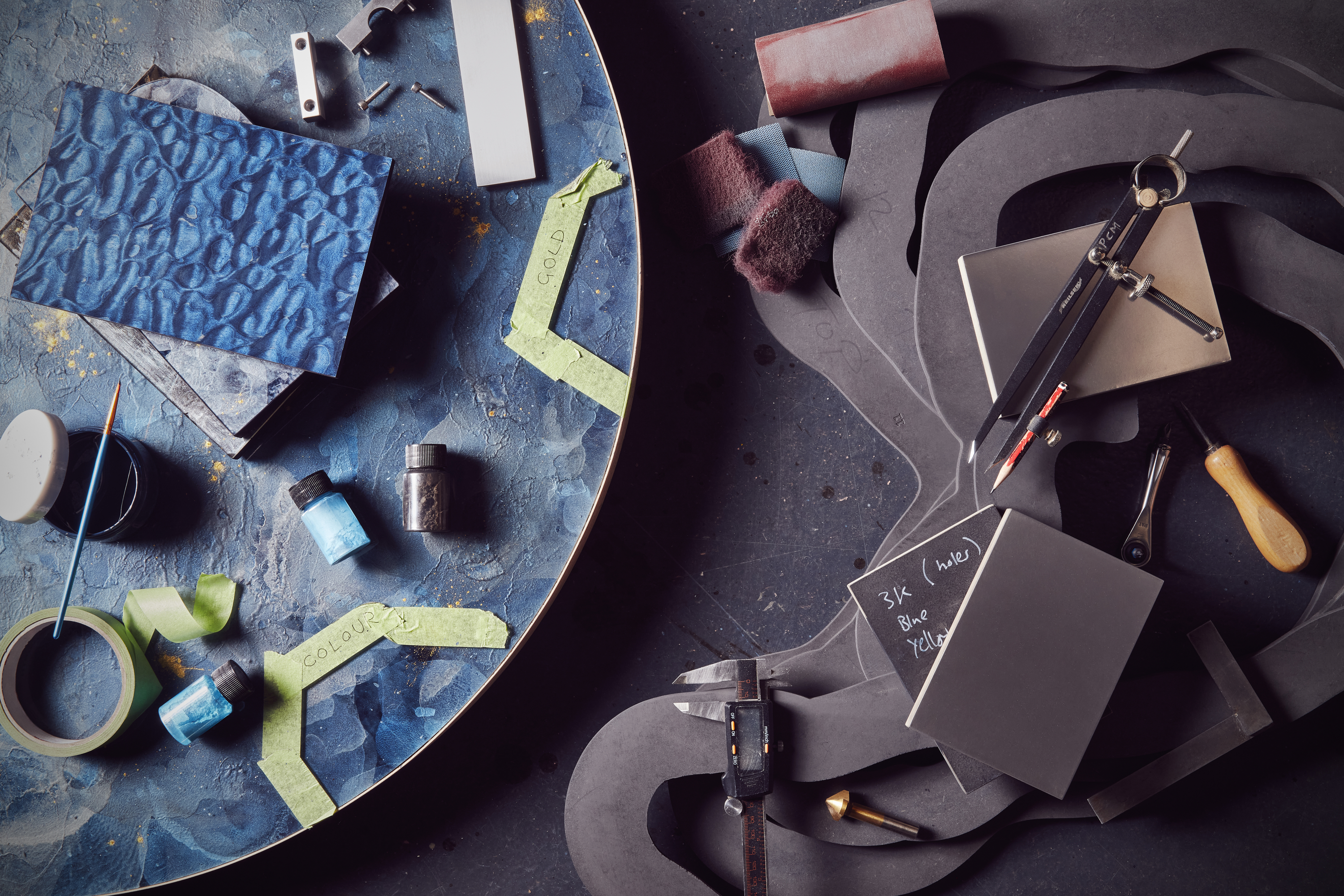
Next, they needed to bring their vision to life. Enter Little Halstock. From their rural Dorset workshop, this small team of master craftspeople makes remarkably detailed and luxurious furniture and one-of-a-kind objects with an everything-is-possible attitude and a finely honed spirit of adventure. Little Halstock’s globe drew inspiration from the globes and maritime instruments of the Renaissance period, at once a celebration of travel and a nod to later humidors and drinks cabinets.
Studio Indigo guided the three narrative strands for the design. Firstly, sky – in particular celestial navigation: Philos pays homage to the maritime traveller guided by the stars and the first armillary spheres. Secondly, water – specifically the relationship between whisky and water and of course the boats on which Philos will find its home. Finally, the Glen of Rothes topography is mirrored in the stepped contour lines of Philos’ base. Even the bezel around the 132-year-old Edinburgh-made compass encased in the base points to Rothes so that, no matter where in the world the gimbal may voyage, it can always find its way back.
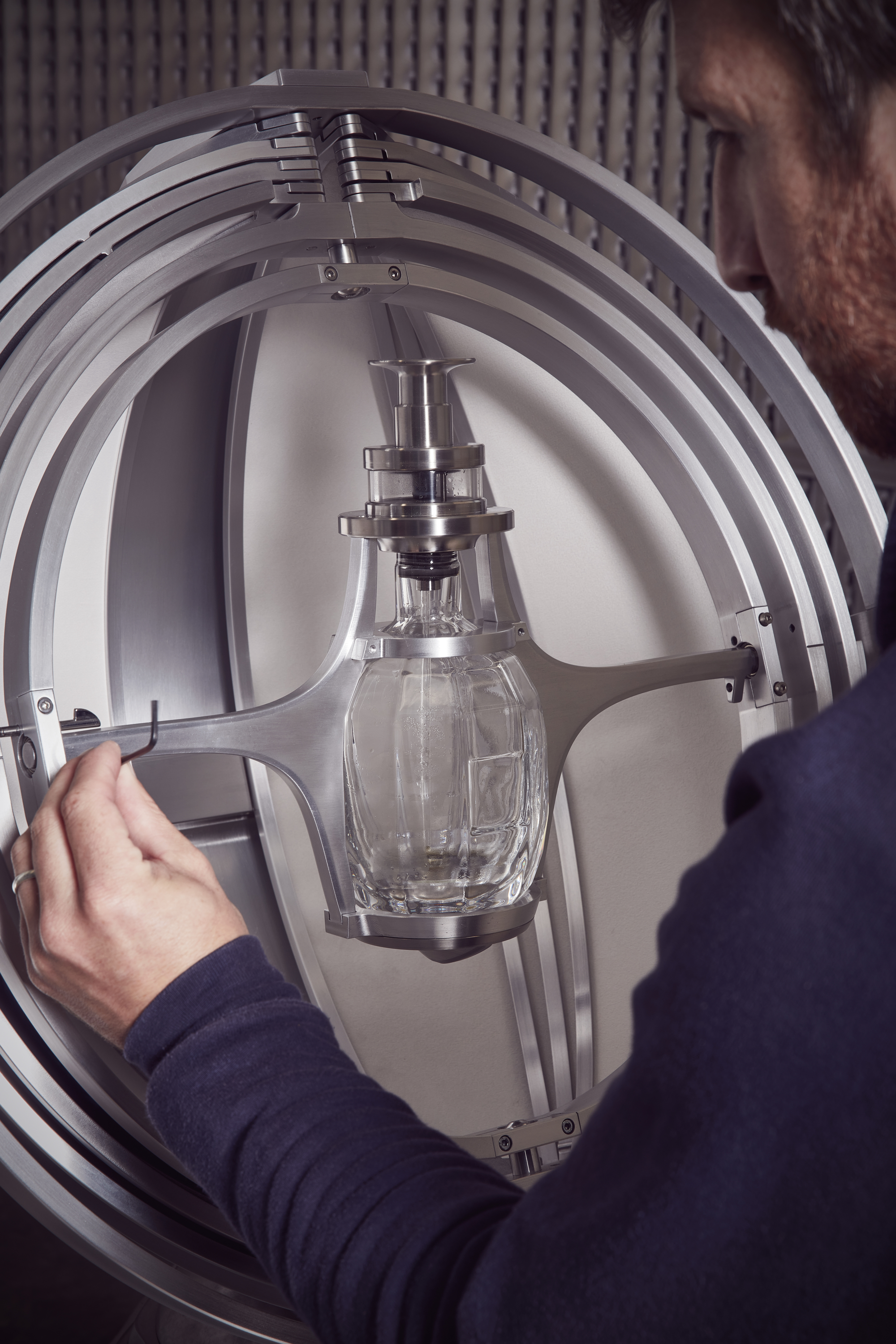
Even though Philos is rooted in history, Studio Indigo wanted the piece to have a contemporary feel. 'This meant a desire to stay away from the traditional woods and brass typical of historic armillary spheres,' says Studio Indigo’s Olga Fox. 'Instead, the mix of contemporary materials in cool steel tones embodies the future of craft.'
For the sphere, the element of water informed the material choices, as the team sought to capture the movement and form of the sea. 'For this, we used a hand-painted lacquer and resin that evokes the depths of the oceans and mesmerising light reflections and refractions. The base is a contoured liquid metal.'
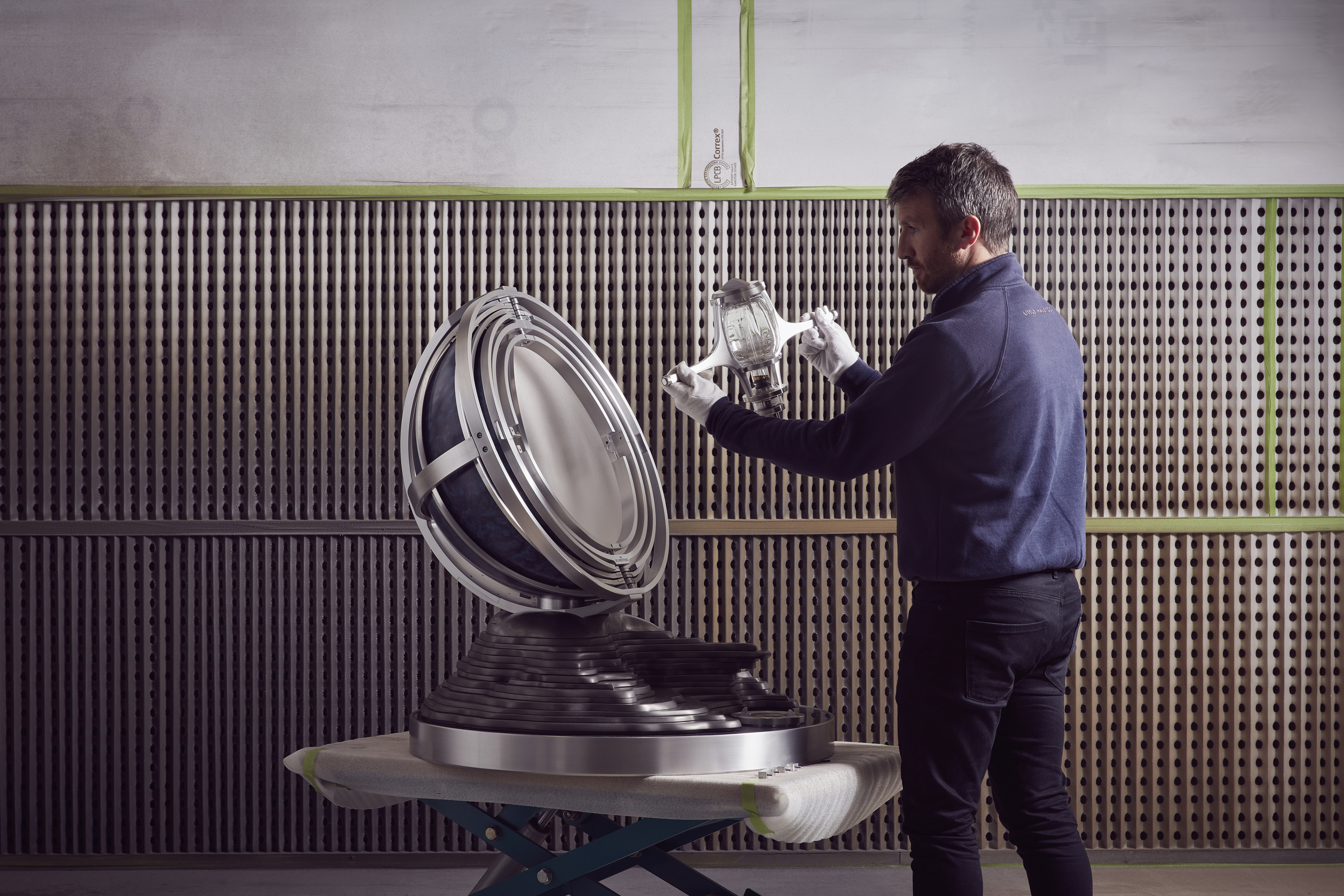
Scale and time were perhaps the biggest challenges, she explains. 'This is a project that has never been done before. The mechanism that the gimbal requires for it to self-pour with precision is nothing short of an engineering feat.' Studio Indigo turned to specialists in aerospace engineering for input on the casing and rotating mechanism, which in turn largely dictated the scale of the piece. The mechanism used for the decanter bottle is very similar to an Aerotrim, a device used by Nasa to train astronauts.
The name was chosen to honour the Greek inventor of the gimbal, Philo of Byzantium (280–220 BC), who sought to create an inkwell that would never spill. It also speaks to the collaboration and sense of friendship that lies behind the project. A venture worth raising a glass to indeed. Carefully though.
Henrietta Thompson is a London-based writer, curator, and consultant specialising in design, art and interiors. A longstanding contributor and editor at Wallpaper*, she has spent over 20 years exploring the transformative power of creativity and design on the way we live. She is the author of several books including The Art of Timeless Spaces, and has worked with some of the world’s leading luxury brands, as well as curating major cultural initiatives and design showcases around the world.
-
 Put these emerging artists on your radar
Put these emerging artists on your radarThis crop of six new talents is poised to shake up the art world. Get to know them now
By Tianna Williams
-
 Dining at Pyrá feels like a Mediterranean kiss on both cheeks
Dining at Pyrá feels like a Mediterranean kiss on both cheeksDesigned by House of Dré, this Lonsdale Road addition dishes up an enticing fusion of Greek and Spanish cooking
By Sofia de la Cruz
-
 Creased, crumpled: S/S 2025 menswear is about clothes that have ‘lived a life’
Creased, crumpled: S/S 2025 menswear is about clothes that have ‘lived a life’The S/S 2025 menswear collections see designers embrace the creased and the crumpled, conjuring a mood of laidback languor that ran through the season – captured here by photographer Steve Harnacke and stylist Nicola Neri for Wallpaper*
By Jack Moss